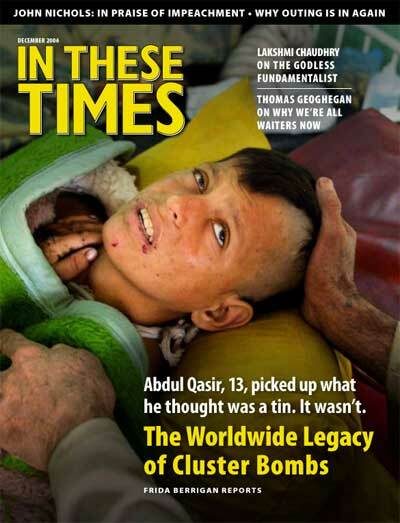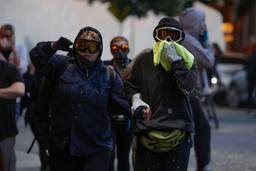CT Scans: A Radioactive Risk
Terry J. Allen argues that CT scans, while effective diagnostic tools, can be dangerous because of the high levels of radiation to which they expose patients.
Terry J. Allen
My dentist and I have been bickering for decades. Steve advocates diagnostic X-rays; I argue that ionizing radiation, an established cancer risk, is not worth the benefit of catching a cavity early. Every couple of years, he threatens to dump me as a patient and I agree to a few X-rays after factoring in the benefits of his skill and his generous hand with the nitrous oxide.
Our negotiations rest on conjoined principles of Western medicine: risk-benefit analysis and informed consent.
But when it comes to the far greater risk of a “procedure performed more than 150,000 times a day in the United States…most consent forms are silent,” notes Georgetown University’s Adrian Fugh-Berman, in a report for the Hastings Center, an independent bioethics research institute.
Computed tomography (CT) scans take multiple X-ray images from different angles and link them into cross-sections of body tissues and organs. Researchers at Yale found that only a minority of U.S. academic medical centers inform patients about alternatives to diagnostic CT – including sonograms and MRIs – or about the radiation.
One abdominal CT, says the Food and Drug Administration (FDA), exposes a patient to 500 times more radiation than a conventional chest X-ray. Exposure from a single full-body CT scan is within the same range as doses that increased the cancer risk of Japan’s A-bomb survivors. Full-body scans can cause a one in 1,250 increased chance of dying from cancer, Radiology reports. That risk more than doubles for the 2-3 million children scanned, and leaps again for the third of those kids given at least three scans, according to the National Academy of Sciences.
Of course, many CT scans are well worth the risk. They can be superb diagnostic tools that result in more effective treatments and, possibly, cures.
But early diagnosis does not always mean longer survival. “If I pick up a tumor that is one centimeter today and you live five years, or I pick it up four years later and you live one year, it’s the same thing,” Dr. Elliott Fishman, a professor of radiology and oncology at Johns Hopkins Hospital, told the New York Times.
The risk-benefit equation skews further at facilities touting CT scan screening for apparently healthy people.
“Are you at risk?,” ask the big red letters of a Web pop-up ad. “Find out for only $99” for a heart scan at Pulse Medical Imaging, “located in the White Plains [NY] business district.”
Or “Come to Florida, for a scan and a tan,” flashes a Web ad for HealthTest Scan Center, where a pelvic, abdomen and chest scan will set you back $895, with a heart scan thrown in.
When Tania answered the phone at Boca Raton, Fla., office, I said I wanted information but thought I was healthy. She chuckled, “Everyone thinks that, but it’s just to make sure. Prevention is better than a cure.” What can a scan prevent? “Death,” she replied. And if my doctor refuses to prescribe it? “See our doctor [either Dr. Marc Kaprow or Rohtem Amir]. He’ll give you the OK.”
I asked Tania about radiation danger. “It’s minimal…with this machine,” she reassured. How often should I get one? “Talk to the doctor, but some people have them four to five times in a six-month period.” Why? “Some people are hypochondriacs,” she confided.
Downplaying or ignoring the radiation risks extends to major studies and journals. Researchers at Presbyterian Hospital/Weill Cornell Medical Center assessed annual CT scans for smokers and former smokers without symptoms and concluded CTs save lives by detecting lung cancer early. The study, published in the October New England Journal of Medicine, never mentions radiation risk. The Center would not release its consent form. David Behrman, head of the Institutional Review Board, could not confirm how, or if, it described the radiation risks, but did say, “I can’t imagine subjects were not informed.”
A New York Times article and editorial pointed out design flaws in the study including the lack of a control group, and noted that CT scans carried risks such as false positives, unnecessary biopsies and “needless surgery to remove tumors that might never have become a problem.” It, too, omitted radiation concerns.
The number of CT scans in the United States is at 60 million a year and rising. The journal of American Society of Radiologic Technologists estimates that “20 percent of radiologic imaging exams are not clinically useful … [and] lapses in safety protocols also are common, unnecessarily increasing radiation exposures.”
Overuse of CT scans “points out a larger problem,” says Fugh-Berman. Relying on information from the pharmaceutical and medical device industries, “physicians are more informed about the benefits of therapy than the risks of drugs and procedures; risks related to diagnostics are off the radar screen.” And once hospitals and medical practices invest in expensive equipment such as CT scanners, the more they use them the more they make. “They are a very high profit item,” says Fugh-Berman.
And profitability is one benefit that commercial medicine always factors in.









